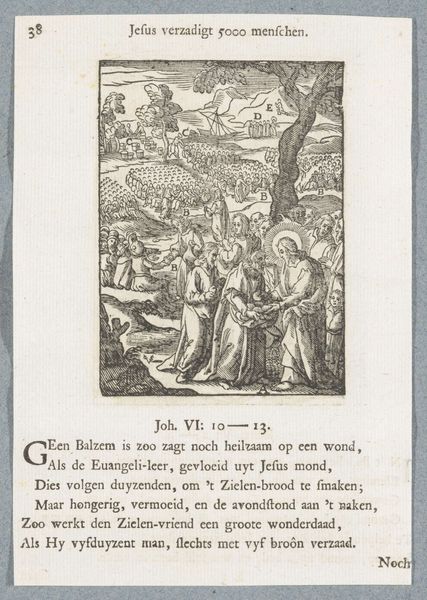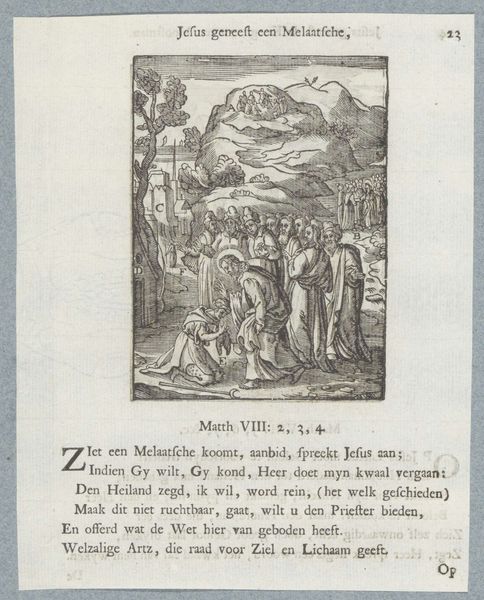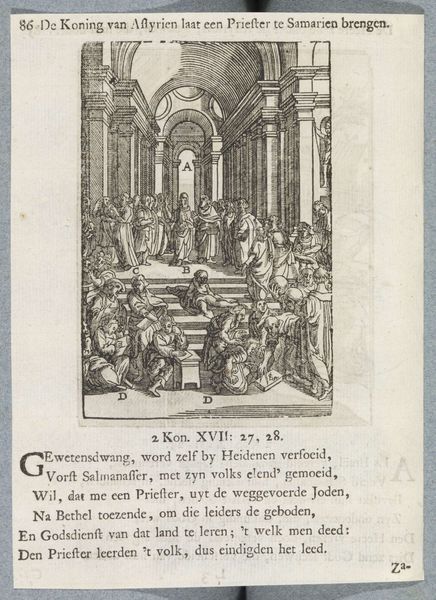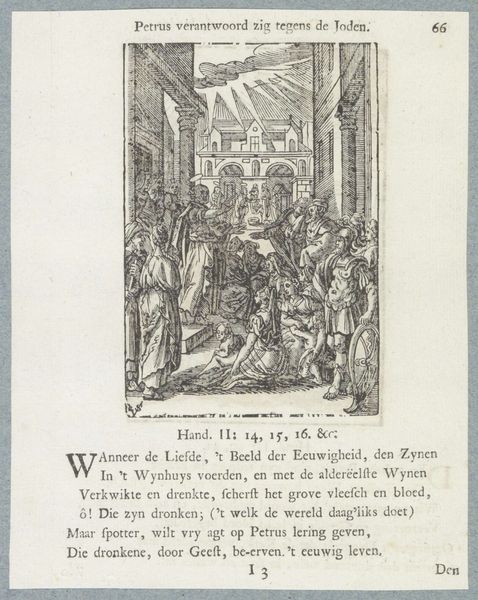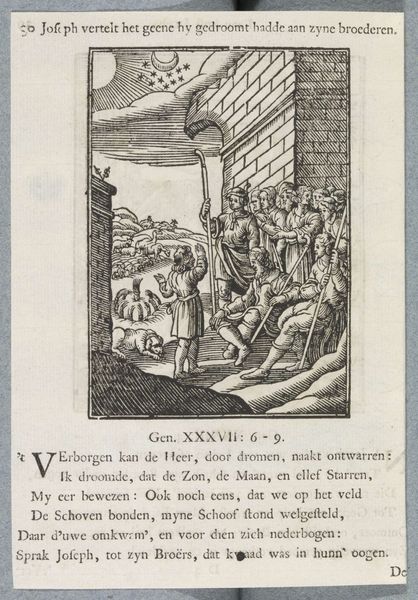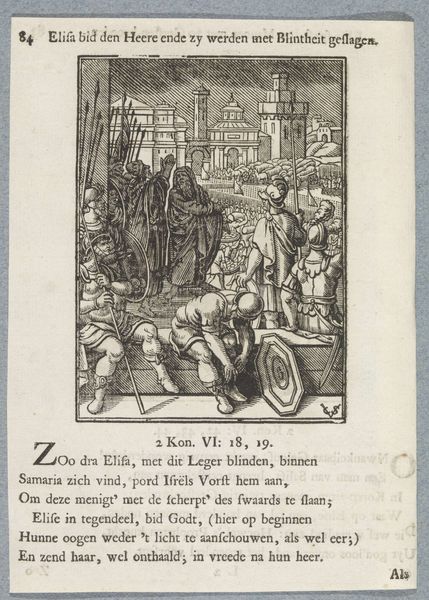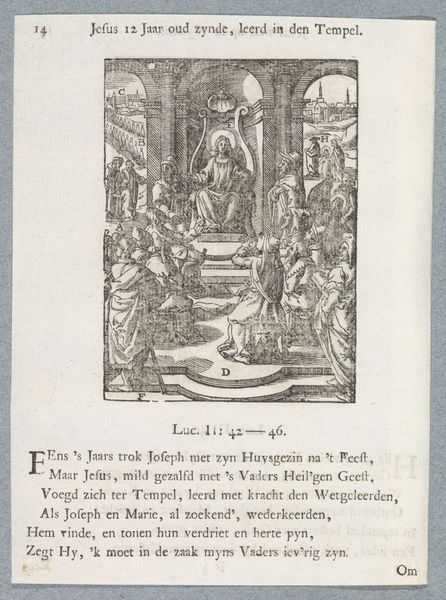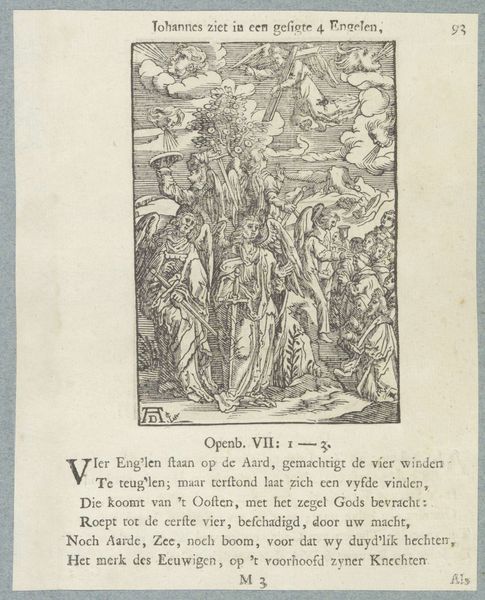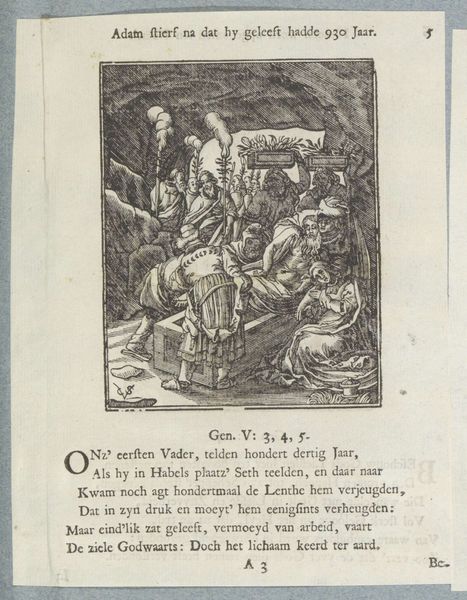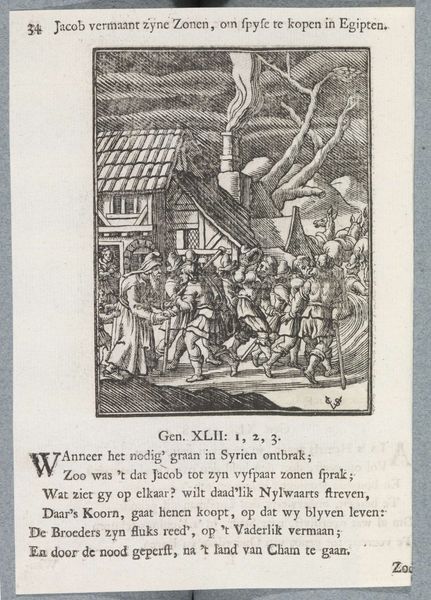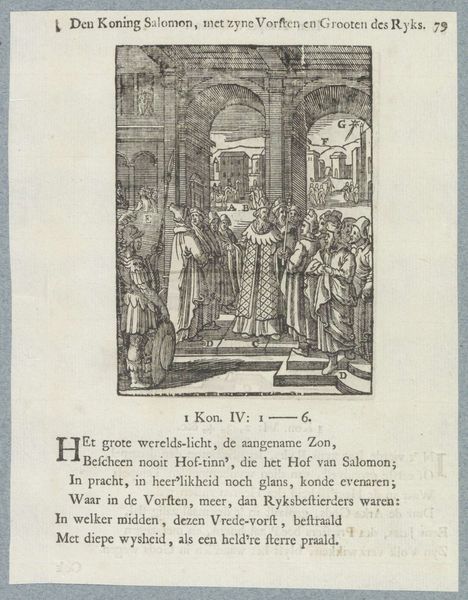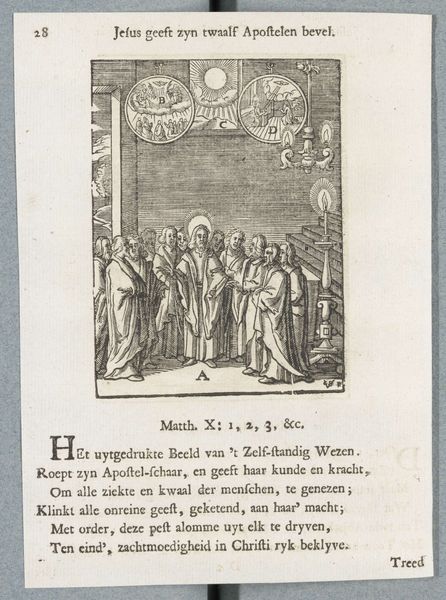
print, engraving
#
narrative-art
# print
#
figuration
#
northern-renaissance
#
engraving
Dimensions: height 103 mm, width 74 mm, height 168 mm, width 134 mm
Copyright: Rijks Museum: Open Domain
Editor: This engraving, "Christus op het Loofhuttenfeest" from sometime between 1629 and 1740 by Christoffel van (II) Sichem, depicts a scene crowded with figures, presumably the Feast of Tabernacles. I'm struck by how the architecture almost overwhelms the figures. How would you interpret this work? Curator: This image pulsates with cultural memory. Notice how the artist meticulously renders the scene, laden with symbolic import. The Feast of Tabernacles, or Sukkot, was and is a time of pilgrimage, a commemoration of the Israelites' journey through the desert, where they lived in temporary shelters. These structures, as you mentioned, are architecturally quite imposing, seemingly fixed in place. Why might the artist emphasize these fixed locations? Editor: Perhaps to suggest the enduring nature of faith? The solidity of the buildings contrasted with the temporary shelters… Curator: Exactly! These "temporary shelters," constructed anew each year, carry within them layers of history. It’s not just a visual document; the print allows the scene and symbolic meanings to be copied and distributed. That portability speaks volumes about the dissemination of religious ideas. Are you familiar with how the imagery of palms operates within this representation? Editor: It seems like many figures carry them, maybe indicating participation and joy during this celebration. Curator: Precisely! And beyond that, palm fronds were often linked to triumphs, royal entrances, even martyrdom. Here, its dual function speaks of reverence and, in hindsight, Christ's ultimate destiny. A somber reminder amidst the revelry? Editor: I hadn't considered that duality before. It's like a hidden premonition within a scene of celebration. Curator: The layering of those associations is something powerful. It demonstrates how seemingly simple images can resonate with a potent cultural symbolism across eras. Editor: I'll definitely keep that in mind moving forward. Thanks for sharing such valuable context!
Comments
No comments
Be the first to comment and join the conversation on the ultimate creative platform.
